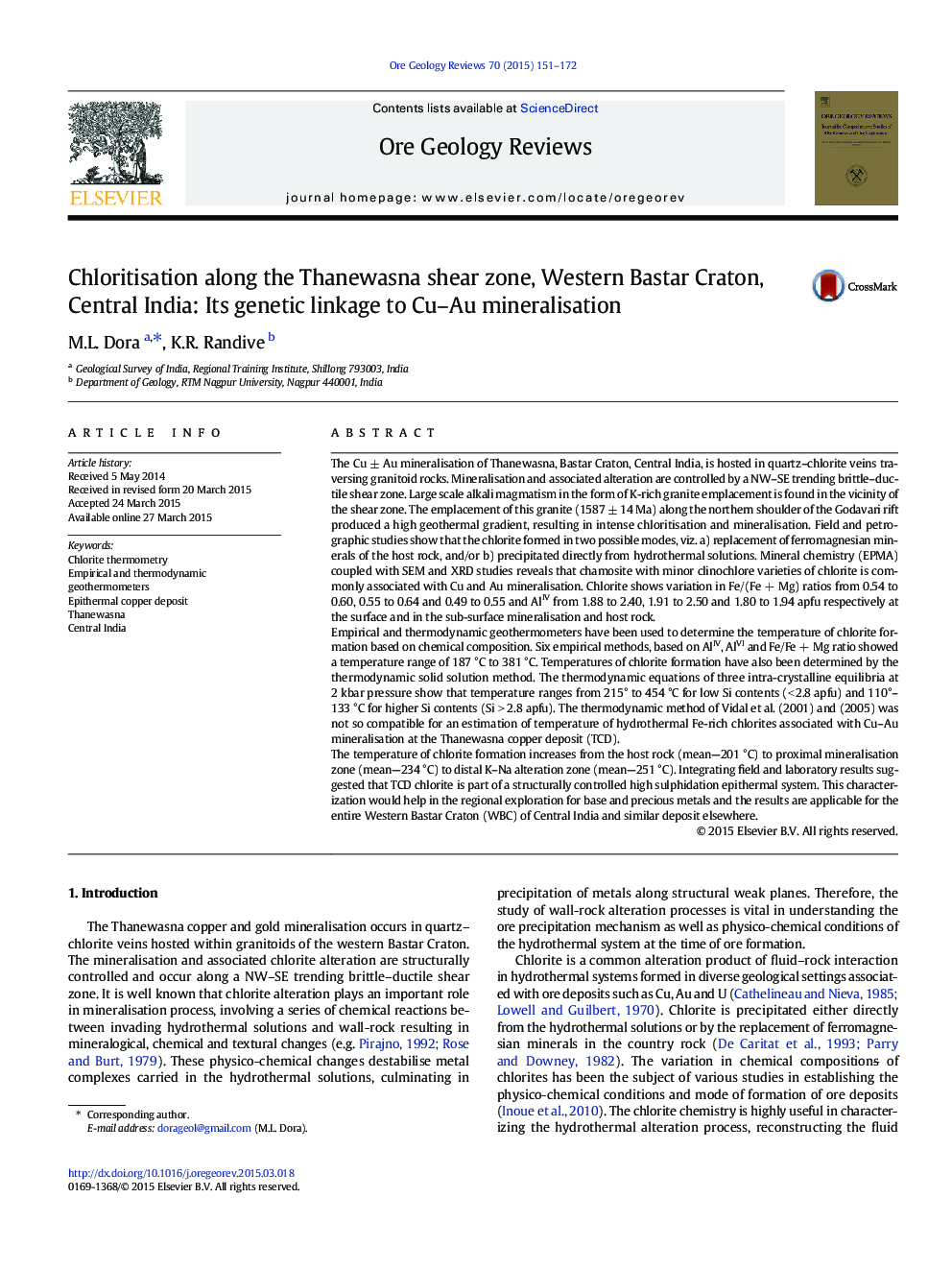| کد مقاله | کد نشریه | سال انتشار | مقاله انگلیسی | نسخه تمام متن |
|---|---|---|---|---|
| 4696973 | 1637234 | 2015 | 22 صفحه PDF | دانلود رایگان |

• Chlorite chemistry reflects Température & formation conditions of Cu-Au minéralisation.
• TCD chlorite is structurally controlled high sulphidation epithermal type deposit.
• Empirical thermometry and Thermodynamic thermometry of chlorite discussed.
The Cu ± Au mineralisation of Thanewasna, Bastar Craton, Central India, is hosted in quartz–chlorite veins traversing granitoid rocks. Mineralisation and associated alteration are controlled by a NW–SE trending brittle–ductile shear zone. Large scale alkali magmatism in the form of K-rich granite emplacement is found in the vicinity of the shear zone. The emplacement of this granite (1587 ± 14 Ma) along the northern shoulder of the Godavari rift produced a high geothermal gradient, resulting in intense chloritisation and mineralisation. Field and petrographic studies show that the chlorite formed in two possible modes, viz. a) replacement of ferromagnesian minerals of the host rock, and/or b) precipitated directly from hydrothermal solutions. Mineral chemistry (EPMA) coupled with SEM and XRD studies reveals that chamosite with minor clinochlore varieties of chlorite is commonly associated with Cu and Au mineralisation. Chlorite shows variation in Fe/(Fe + Mg) ratios from 0.54 to 0.60, 0.55 to 0.64 and 0.49 to 0.55 and AlIV from 1.88 to 2.40, 1.91 to 2.50 and 1.80 to 1.94 apfu respectively at the surface and in the sub-surface mineralisation and host rock.Empirical and thermodynamic geothermometers have been used to determine the temperature of chlorite formation based on chemical composition. Six empirical methods, based on AlIV, AlVI and Fe/Fe + Mg ratio showed a temperature range of 187 °C to 381 °C. Temperatures of chlorite formation have also been determined by the thermodynamic solid solution method. The thermodynamic equations of three intra-crystalline equilibria at 2 kbar pressure show that temperature ranges from 215° to 454 °C for low Si contents (< 2.8 apfu) and 110°–133 °C for higher Si contents (Si > 2.8 apfu). The thermodynamic method of Vidal et al. (2001) and (2005) was not so compatible for an estimation of temperature of hydrothermal Fe-rich chlorites associated with Cu–Au mineralisation at the Thanewasna copper deposit (TCD).The temperature of chlorite formation increases from the host rock (mean—201 °C) to proximal mineralisation zone (mean—234 °C) to distal K–Na alteration zone (mean—251 °C). Integrating field and laboratory results suggested that TCD chlorite is part of a structurally controlled high sulphidation epithermal system. This characterization would help in the regional exploration for base and precious metals and the results are applicable for the entire Western Bastar Craton (WBC) of Central India and similar deposit elsewhere.
Journal: Ore Geology Reviews - Volume 70, October 2015, Pages 151–172